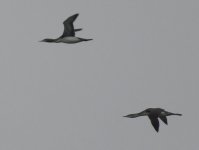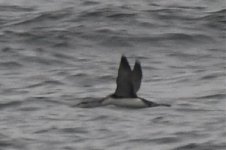Hello
I saw these 2 divers on the northern coast of Poland couple of days ago
Are both Red-throated Diver, since I see some variation around the throat area in the coloring?
I have more pictures of different angles, but of same quality if needed..
Thanks in advance
I saw these 2 divers on the northern coast of Poland couple of days ago
Are both Red-throated Diver, since I see some variation around the throat area in the coloring?
I have more pictures of different angles, but of same quality if needed..
Thanks in advance






